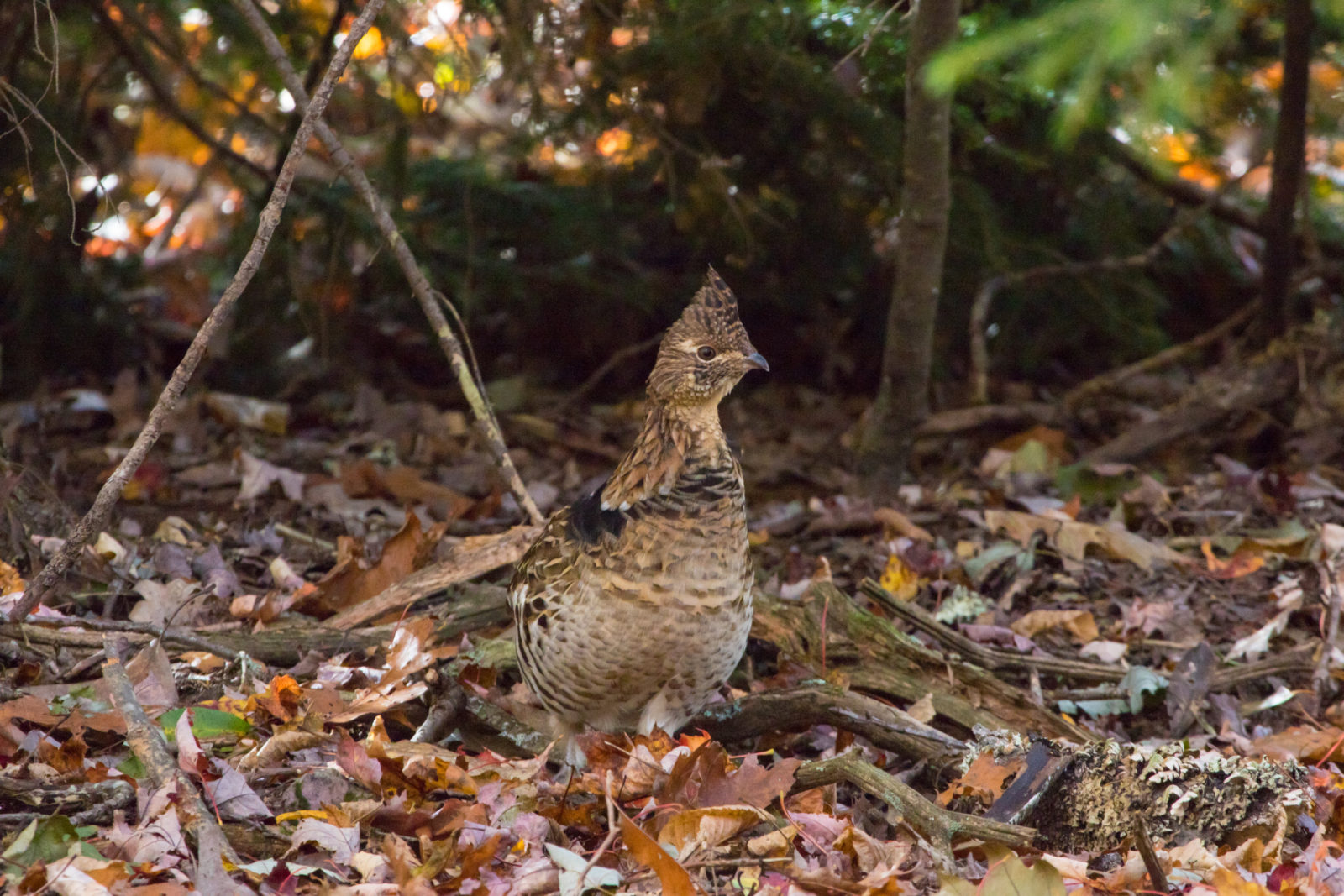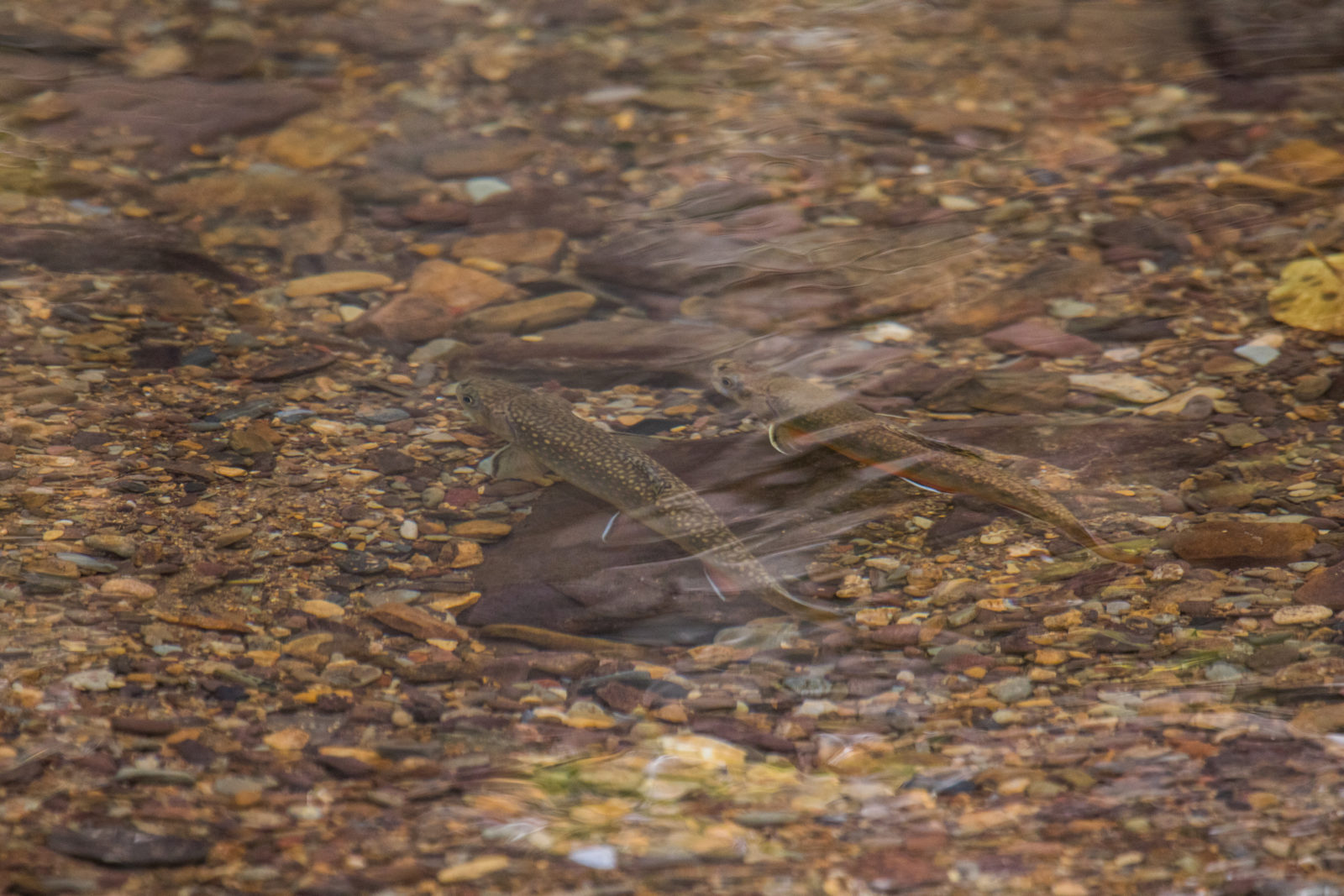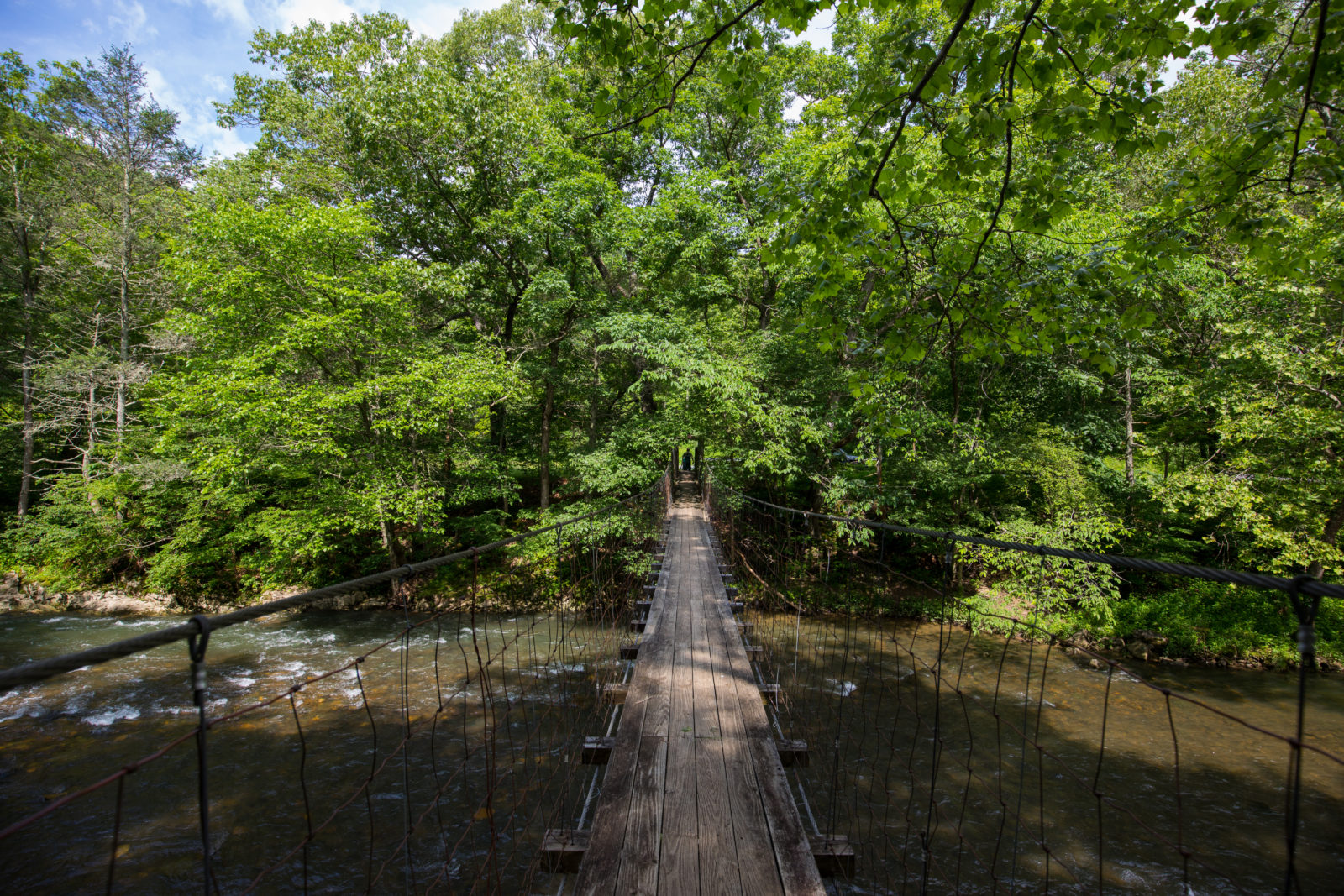Important Notices for this WMA
| Notice |
|---|
| Highland WMA Suspension Foot Bridge ClosedEffective immediately, and until further notice, the suspension foot bridge over the Bullpasture River on the Highland WMA is closed. A recent inspection of the bridge revealed significant degradation of major structural components deeming it unsafe for use. |
Overview
The Highland Wildlife Management Area (WMA) is located in Highland County, a county regarded as having the highest average elevation of any county east of the Mississippi River. This management area offers challenging and rewarding hunting for various large and small game, trout fishing in the magnificent Bullpasture Gorge, and hiking and wildlife viewing on an array of access roads.
Highland WMA has 14,283 acres distributed across three separate tracts—Jack Mountain, Bullpasture Mountain, and Little Doe Hill. It is characterized by high mountains, ridges, moderate to steep slopes, and deep hollows/valleys. Elevations of the WMA range from 1,800 to 4,390 feet, with most of the ridge tops in the 2,500-to-3,200-foot range. Hupman Valley, in the Bullpasture Mountain Tract, is a long, wide high-elevation valley with gentle slopes surrounded on three sides by higher ridges.
The WMA is mostly forested; comprised primarily of mixed hardwoods dominated by oaks and hickories. Other forests found on the area include mixed hardwood and pine stands. A small patch of native red spruce grows on Sounding Knob—the highest mountain on the WMA—located on the Jack Mountain Tract.
There are a few open areas on the WMA that vary in size and shape containing a wide array of grasses, flowering plants, shrubs and young trees. These open areas are managed for, and support, native plant species and a wide array of wildlife species, especially open field and young forest songbirds, small mammals, and pollinating insects.
Notably, the high-elevation field complexes on the top of the Jack Mountain Tract are remnants of old summer pastures and are managed for the golden-winged warbler and the Federally Endangered rusty patched bumble bee.
The overall habitat management efforts for the Highland WMA focus on maintaining sustainable ecosystems dominated by native plant species. For instance, management of the forests on the Highland WMA focuses on fostering healthy, diverse forests of varying ages and structure while enhancing hard (nuts and seeds) and soft (berries and other fruit) mast production for wildlife. Occasionally, apple trees may be planted within and around the field complexes to diversify the habitat as well.
Hunting
Sunday Hunting Opportunities on Public Lands in Virginia »
The Highland WMA offers good hunting opportunities for a variety of game species. Deer, bear and turkeys are the most popular species hunted. Ruffed grouse, squirrels and rabbits are also found in fair numbers offering hunters good small game hunting opportunities. The Bullpasture Mountain Tract is best known for its deer and turkey hunting while the higher, more rugged Jack Mountain Tract is recognized for bear hunting, although fair numbers of deer and turkey hunters enjoy this tract as well. Numerous roads, including improved seasonal access roads and old logging roads, provide ample access for hunting.

Fishing
The Bullpasture River flows along and through a portion of the Highland WMA, a large mountain stream that will delight almost any angler, particularly the stretch flowing through the Bullpasture Gorge. This beautiful river is seasonally stocked with trout, keeping it supplied with catchable-sized fish. Nearby, south of the WMA, there is public access to the Cowpasture River by way of the George Washington and Jefferson National Forest (U.S. Forest Service) lands, south of Williamsville, offering more mountain river trout fishing.

Other Activities
The Highland WMA is an excellent location for viewing wildlife and wildflowers. The road systems on the WMA, along with a myriad of old, abandoned logging roads, provide ample access to the WMA for wildlife viewers. The WMA is never closed to public use, so viewers are welcome any time of the day, night, and year. Primitive, dispersed camping is allowed on the WMA; however, users must register with DWR prior to camping.
South of the WMA (just south of Williamsville) is the Department’s Coursey Springs Fish Cultural Station. Here, one can tour the trout rearing facility and learn about growing and stocking trout and/or enjoy several hundred acres of public land surrounding the hatchery for wildlife-related recreation. Highland County’s famous Highland Maple Festival occurs on two weekends in mid-March in nearby Monterey. Also nearby are thousands of acres of the George Washing and Jefferson National Forest serviced by the U.S. Forest Service’s Deerfield and Warm Springs Ranger Districts.
Facilities
There are no public buildings, camp sites, or public bathroom facilities on the WMA. Twenty miles of seasonal and administrative access roads provide ample vehicle access to the WMA during the fall hunting and spring turkey seasons. Informational kiosks are found in a few locations on the area with maps and information for users. A suspension foot bridge, crossing the Bullpasture River in the Bullpasture Gorge, allows access to the southwestern portion of the Bullpasture Mountain Tract.

Maps & Directions
As mentioned, the Highland WMA is located in Highland County, approximately 30 miles west of Staunton. Follow U. S. Route 250 west out of Staunton, VA to get in the vicinity of the WMA. In McDowell, turn south on State Route 678 (Bullpasture River Road) to get to the Bullpasture Mountain Tract. Continuing on Rt. 250, and west of McDowell, is the Little Doe Hill Tract on the north side (this tract has no public access facilities). Further west on Rt. 250, turning south on State Route 615 (Davis Run Road) will get one to the western access of the Jack Mountain Tract. On top of Jack Mountain, the Sounding Knob Road off of Rt. 250 will take one to the high ridges and mountain tops of the Jack Mountain Tract. Consult the map for greater details.
Map of Highland WMA
What To Know Before Visiting
A valid Virginia hunting or trapping license, fishing license, current certificate of Virginia boat registration, access permit, or current “Restore the Wild” membership is required to use this area.
Recreational Opportunities
- Hunting
- Trapping
- Primitive Camping (Requirements for Camping on WMAs)
- Trout Fishing
- Hiking
- Horseback Riding
- Wildlife Viewing

